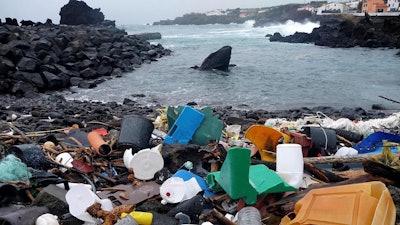
A recent study warns that plastic pollution in the oceans is increasingly posing a danger to marine life thousands of miles from its sources.
The analysis, published in the journal Science Advances, found that currents in the North Atlantic Ocean are transporting plastic particles into remote Arctic waters and leaving them in the water and ice of the Greenland and Barents seas.
Plastic pollution in the ocean grew dramatically in recent decades — and began accumulating in the marine food chain -- but the overall impact remains poorly understood.
Researchers attributed the problem in the Arctic to plastic bits — most of which were likely deposited years ago near larger population centers and warmer climates — that became caught up in deep-water currents that send warmer water north.
The plastic can then become trapped by sea ice or sparsely populated land masses.
Lead author Andrés Cózar Cabañas, a biologist at the University of Cádiz in Spain, told The New York Times that because those Arctic environments are unlike other areas on Earth, "consequences will be felt at greater scale in an ecosystem like this."
Other factors, meanwhile, could exacerbate the problem in coming years.
A small fraction of ocean pollution tends to accumulate in areas where ocean currents converge, and one model suggested the Barents Sea off the northern coast of Norway and Russia could be one of those places.
In addition, the Times noted that Arctic waters could become more heavily traversed — and polluted — by humans as climate change erodes the region's ice.






















